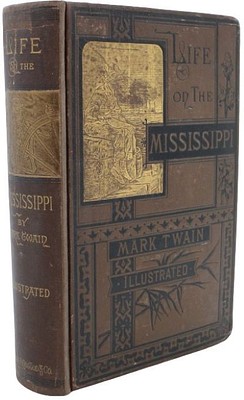Newspaper Account of Boston Massacre 1770
About Seller
522 South Pineapple Avenue
Sarasota, FL 34236
United States
Sarasota Estate Auction specializes in a wide variety of furniture, antiques, fine art, lighting, sculptures, and collectibles. Andrew Ford, owner and operator of the company, has a passion for finding the best pieces of art and antiques and sharing those finds with the Gulf Coast of Florida.
Two ways to bid:
- Leave a max absentee bid and the platform will bid on your behalf up to your maximum bid during the live auction.
- Bid live during the auction and your bids will be submitted real-time to the auctioneer.
Bid Increments
| Price | Bid Increment |
|---|---|
| $0 | $10 |
| $100 | $25 |
| $250 | $50 |
| $1,000 | $100 |
| $2,500 | $250 |
| $7,500 | $500 |
| $20,000 | $1,000 |
| $50,000 | $2,500 |
| $100,000 | $5,000 |
| $250,000 | $10,000 |
About Auction
Aug 5, 2023
Featuring a Lifetime Collection of Early American Pottery, a Fantastic Georg Jensen Sterling Tea Set - 23 OZT, Important Books and Ephemera, and Exquisite Estate Jewelry. Also including art from artists including Roy Lichtenstein, Camille Pissarro, Karel Appel, Victor Vasarely, and many more. Sarasota Estate Auction sarasotaestateauction@gmail.com
- Lot Description
Newspaper Account of Boston Massacre 1770. Possibly a second reprinting. This is a newspaper account of the Boston Massacre from The Boston Gazette published on March 12, 1770, a week after the massacre occurred. The Boston Gazette was a weekly newspaper established in 1719 and on March 5, 1770, five demonstrators were killed by the British in the incident called the Boston Massacre, and it was a tinderbox that almost set off the American Revolutionary War five years before the battles between the British and Americans at Lexington and Concord.
A week after the incident in front of the Custom House in Boston, the Gazette published a four-page newspaper with a lengthy account of the tensions and details that led up to the massacre, and it includes a picture of four coffins with initials of the victims who were killed at the site. They were buried three days after the massacre. (We don’t know where the fifth victim was buried.)
The masthead reads “The Boston Gazette And Country Journal, Containing the freshest Advice, Foreign and Domestic, No. 779” and last page at the bottom reads “Boston. Printed by Edes & Gill in Queen-Street. 1770.” The article starts on the second page and carries over to page 3, and both pages have black borders, like a mourning cover. The initials SG, SM, JC, and CA appear on the coffins, and they stand for Samuel Gray, Samuel Maverick, John Clark, and Crispus Attucks.
Crispus Attucks (c. 1723 - March 5, 1770) was an American sailor, whaler, and stevedore of African and Native American descent, who is traditionally regarded as the first person killed in the Boston Massacre, and as a result the first American killed in the American Revolution.
While Attucks is widely remembered as the first American casualty of the American Revolutionary War, 11-year-old Christopher Seider was actually shot and killed a few weeks earlier by a customs officer, Ebenezer Richardson, on February 22, 1770, and some people consider him to the first casualty of the war. The boy’s funeral became a major political event, with his death heightening tensions that erupted into the massacre on March 5.
Historians don’t know if Attucks was a free man or an escaped slave, but most agree he was of Native American and African descent. Two eyewitnesses to the massacre did not refer to him as black or as a Negro; it appears he was viewed by Bostonians instead as being of mixed ethnicity.
(Attucks’ Native American roots came from the Wampanoag tribe, a people based in southeastern Massachusetts and parts of eastern Rhode Island; their territory included present-day Martha’s Vineyard and Nantucket.)
Some background to the massacre: In the fall of 1768, British troops were sent to Boston to maintain order amid growing colonial unrest; there had been a spate of attacks on local officials following the introduction of the Stamp Act and the Townshend Acts, onerous acts which taxed Americans beyond their liking. Radical Whigs had coordinated waterfront mobs against the British authorities, but the presence of troops, instead of reducing tensions, served to inflame them.
After dusk on March 5, 1770, a wigmaker's apprentice mistakenly accused a British officer of not paying a bill; the officer ignored the apprentices' insults, but a sentry intervened after the boy began physically assaulting the officer. Both townspeople and nine soldiers of the 29th Foot Regiment gathered. The colonists threw snowballs and debris at the British soldiers. A group of men including Attucks approached the Old State House armed with clubs and sticks; a soldier was struck with a piece of wood, an act some witnesses claimed was done by Attucks. Other witnesses stated that Attucks was just "leaning upon a stick" when the soldiers opened fire.
The article begins in the first column about half way down and reads:
“On the evening of Monday, being the fifth, several soldiers of the 29th Regiment were seen parading the streets with their drawn cutlasses and bayonets, abusing and wounding numbers of the inhabitants. A few minutes after nine o’clock, four youths named Edward Archbald, William Merchant, Francis Archbald, and John Leech came down Cornhill [Street] together,
and separating at Doctor Loring’s corner, the two former were passing the narrow alley leading to Murray’s barrack, in which was a soldier brandishing a broad sword of an uncommon size against the walls, out of which he struck fire plentifully.
A person of mean countenance armed with a large cudgel bore him company. Edward Archbald admonished Mr. Merchant to take care of the sword, on which the soldier turned round and struck Archbald on the arm, then pushed at Merchant and pierced through his clothes, inside the arm close to the armpit, and grazed the skin. Merchant then struck the soldier with a short stick he had … The other person ran to the barrack and brought with him two soldiers, one armed with a pair of tongs, the other with a shovel.
He with the tongs pursued Archbald back through the alley, collared and laid him over the head with the tongs. The noise brought people together; and John Hicks, a young lad … knocked the soldier down but let him get up again; and more lads gathering, drove them back to the barrack where the boys stood some time as it were to keep them in. In less than a minute ten or twelve of them [soldiers] came out with drawn cutlasses, clubs, and bayonets and set upon the unarmed boys and young folk who stood them a little while but, finding the inequality of their equipment, dispersed.
On hearing the noise, one Samuel Atwood came up to see what was the matter and, entering the alley from dock square, heard the latter part of the combat. And when the boys had dispersed, he met the ten or twelve soldiers aforesaid rushing down the alley towards the square and asked them if they intended to murder people. They answered ‘Yes, by God, root and branch!’ With that one of them struck Mr. Atwood with a club which was repeated by another; and being unarmed, he turned to go off and received a wound on the left shoulder, which reached the bone and gave him much pain.
Retreating a few steps, Mr. Atwood met two officers and said ‘Gentlemen, what is the matter?’ They answered ‘You’ll see, by and by’. Immediately after, those heroes appeared in the square, asking ‘Where were the boogers? Where were the cowards?’ But notwithstanding their fierceness to naked [unarmed] men, one of them advanced towards a youth who had a split of a raw stave in his hand and said ‘Damn them, here is one of them.’
But the young man seeing a person near him with a drawn sword and good cane ready to support him, held up his stave in defiance; and they quietly passed by him up the little alley by Mr. Silsby’s to King Street, where they attacked single and unarmed persons ’till they raised much clamour, then turned down Cornhill Street, insulting all they met in like manner and pursuing some to their very doors.
Some 30 or 40 persons, mostly lads, being by this means gathered in King Street, Captain Preston with a party of men with charged bayonets came from the main guard to the commissioner’s house, the soldiers pushing their bayonets, crying ‘Make way!’ They took place by the custom house and, continuing to push to drive the people off, pricked some in several places, on which they became clamorous and, it is said, threw snowballs.
On this, the Captain commanded them to fire … more snowballs coming, he again said ‘Damn you, fire, be the consequence what it will!’ One soldier then fired, and a townsman with a cudgel struck him over the hands with such force that he dropped his firelock; and rushing forward, aimed a blow at the Captain’s head which grazed his hat and fell pretty heavy upon his arm. However, the soldiers continued the fire successively till seven or eight or, as some say, 11 guns were discharged.”
The article continues and ends on the next page, and this is what struck a tinder match and almost set off full-fledged war between the British and the Americans.
The newspaper is very rare. We have only been able to find four listed in Special Collections around the country; there are actually six listed - at Indiana University, Newberry Library in Chicago, Fordham University, the University of Kansas, Yale and Amherst and that’s it - but one is facsimile copy and another is listed on WorldCat as being at the University, but it is not in their holdings, which makes this a very rare copy of a very important event in American history. The Smithsonian also has a copy, but it is not on view yet, and there is a copy at the Massachusetts Historical Society, but this copy is in much better shape than that.
The newspaper measures 16 1/4 x 22. in. wide when unfolded, with a partial spine split up the middle, browning at the top, bottom, and middle of the newspaper, a little bit of wear, a couple of small holes, and creases along the edges, but actually in remarkably good condition for its age.
#82, #1606 - Shipping Info
-
SHIPPING INFORMATION·
Sarasota Estate Auction IS NOT RESPONSIBLE FOR SHIPPING. All shipping will be handled by the winning bidder. Sarasota Estate Auction recommends obtaining shipping quotes before bidding on any items in our auctions. If you are interested in obtaining any information on local shippers, please send us an email and we will kindly send you a list of local shippers. Refunds are not offered under any circumstances base on shipping issues, this is up to the buyer to arrange this beforehand.
Premier Shipping, info@premiershipment.com
-
- Payment & Auction Policies
-
Available payment options
We accept all major credit cards, wire transfers, money orders, checks and PayPal. Please give us a call at (941) 359-8700 or email us at SarasotaEstateAuction@gmail.com to take care of your payments.
-
- Buyer's Premium



 EUR
EUR CAD
CAD AUD
AUD GBP
GBP MXN
MXN HKD
HKD CNY
CNY MYR
MYR SEK
SEK SGD
SGD CHF
CHF THB
THB





























